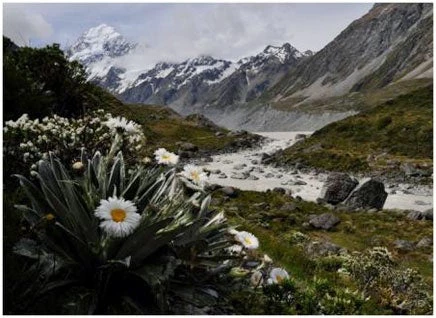
But the conservation of this ecosystem does not only provide benefits in terms of biodiversity conservation. Adjacent communities and the Government of Rwanda as a whole benefit from the income streams the tourism sector generates. Protecting the ecosystem also helps to assure sustainable flow of water from these “water towers” benefiting agriculture and lowland ecosystems alike. Not only are the Virunga gorillas and other mountain species threatened by climate change but there are also consequences for the communities that depend on them.
Covering 24% of the Earth’s surface, mountain ecosystems play a critical role in maintaining a sustainable flow of resources to the plains below. Mountains are the source for nearly 50% of the world’s freshwater for direct consumption, agriculture, and energy. Also, mountain tourism accounts for 15-20% of the world’s tourism industry, totaling an estimated $US70-90 billion per year. Mountain regions are also severely impacted by climate change, which only magnifies existing development challenges. Ecosystems will experience a vertical shift, as climates warm, generally flora and fauna will move towards higher altitudes. Fragile alpine ecosystems systems and endemic flora and fauna are likely to change resulting in significant negative ecological and socio-economic implications.
Consequently, protecting these forests and making sure they are carefully managed for the conservation of the wider habitat and biodiversity is an important step towards sustainable mountain development. The United Nations General Assembly recognizes this, declaring December 11 as International Mountain Day. 2011 the focus was on “Mountain Forests—roots to our future”, honoring 2011 as the International Year of Forests. Mountains were also recognized during the climate negotiations earlier this month in Durban, South Africa where the first UNFCCC-related Mountain Day was organized to highlight and discuss the impacts of climate change in mountain regions.
Over the past decade, the World Bank has been instrumental in protecting mountain ecosystems and a key financing institution for sustainable mountain development. Between fiscal year 2000 – 2010, the World Bank invested about $US66 billion in mountain regions in general, with about $US1.9 billion dedicated to activities addressing sustainable management of mountain forests and $US636million had been invested in the conservation of mountain biodiversity.
With support from the World Bank’s Development Grant Facility (DGF), the World Bank is taking this work forward through a Strategic Initiative on Mountains and Climate Change with global partners, such as The Mountain Partnership, the International Center for Integrated Mountain Development in Kathmandu, Nepal, and the United Nations Environment Program. The objective is to enhance the global advocacy of climate change in mountains at the international level, strengthen cross-regional capacity building around the topic, and facilitate knowledge exchange—especially focusing on South-South cooperation. For 2012, the initiative will continue with a series of activities building on the successful work program implemented in 2011.
By linking this year’s International Mountain Day to the International Year of Forests 2011, it demonstrates that not only mountain forests, but sustainably managed and conserved mountain ecosystem, really represent “Roots to our Future” as the motto of International Mountain Day 2011 states. Looking forward to 2012—which will host the Earth Summit in Rio de Janeiro and COP 11 of the Biodiversity Convention—I am confident that mountain regions and the people, fauna, and flora that live on them will continue to be a focus of attention.



Join the Conversation